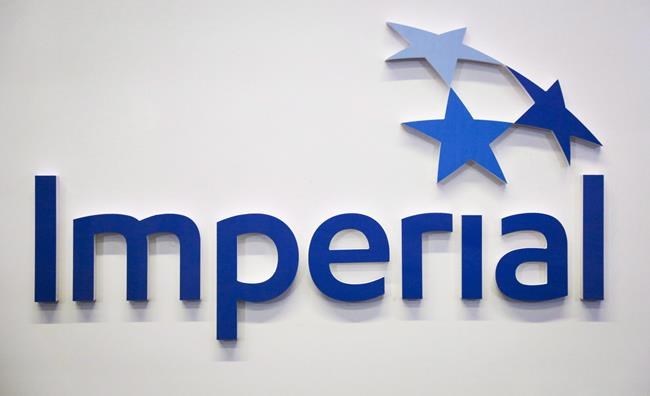CALGARY — Imperial Oil Ltd. announced Friday that it is raising its quarterly dividend by nearly 30 per cent and also plans to buy back up to $1.5 billion worth of shares — further evidence that shareholders of Canadian oil and gas stocks are reaping the benefits of 2022's global energy crisis.
The Calgary-based company reported its third-quarter profit more than doubled compared with a year ago, totalling $2.03 billion or $3.24 per diluted share for the quarter ended Sept. 30, up from $908 million or $1.29 per diluted share in the same quarter a year earlier.
Revenue and other income totalled $15.22 billion, up from $10.23 billion in the third quarter of 2021.
The strong results came even as crude oil prices and refining margins have softened somewhat since the first half of the year, when Russia’s invasion of Ukraine and subsequent sanctions imposed upon Russian business and other activities in Russia drove energy commodities to heights not seen in many years.
But though the price of crude has come down somewhat from its early summer peak, global economic and geopolitical uncertainty continue to weigh on supply levels and don't appear to be going away any time soon. That means a likely continuation of healthy profits for Canada's energy sector through at least the end of this year.
"So far, the fourth quarter seems to be a continuation of this economic environment," said Imperial Oil chairman, president and CEO Brad Corson, in a conference call with analysts Friday.
"With all of our major planned maintenance activities behind us, our plans are to continue running at maximum levels as we have so far this year. This sets us up well for a very strong finish to the year."
Many oil and gas companies have been enjoying record free cash flows in 2022, but coming on the heels of what was nearly a decade of depressed commodity prices, much of this excess cash has been used to pay down debt. In the third quarter alone, Imperial reduced its outstanding debt by $1 billion, bringing its debt-to-capital ratio from 19 per cent at the end of 2021 to below 16 per cent now.
The other priority for the sector has been rewarding shareholders. Energy stocks took a beating during the bad years, but this year the sector has been the TSX's top performer. Many companies have announced dividend hikes, special dividends or share buyback programs.
But that very strategy has also come under fire by critics who say oil and gas firms should be using more of their hefty profits to invest in decarbonization projects. Economists have also pointed out that 2022's oil price boom hasn't brought with it a surge of employment in the sector.
But on Friday, Corson appeared to dispute some of these criticisms.
"Along with strong financial results like this, comes increased royalty and tax contributions to the government that go to support our local communities," he said as part of his opening remarks.
He added the company is reinvesting in its business, with total capital spending expected next year of $1.4 billion — a plan that includes ongoing production optimization projects at its Kearl and Cold Lake oilsands facilities.
Corson said Imperial is also just months away from making a final investment decision on its proposed Strathcona renewable diesel facility. Under the terms of the proposal, Pennsylvania-based Air Products — which is building a hydrogen facility near Edmonton — will supply hydrogen via pipeline to Imperial's Strathcona refinery. The hydrogen will be used together with locally grown vegetable oils to produce low-carbon diesel fuel.
The entire project could cost $1 billion, with Imperial's share of the investment working out to about $500 million, Corson said.
"So I think we're striking a very good balance between investing in the sustainability of our company and in our future, but at the same time, doing that in a responsible way that also yields significant surplus cash that we can return to our shareholders," Corson said.
Imperial is also a member of the Pathways Alliance, a consortium of oilsands companies that is exploring the possible development of a major carbon capture and storage network in northern Alberta. Pathways has not yet pulled the trigger on that project, though the group says it could spend up to $16.5 billion before 2030 if it goes ahead.
Imperial's upstream production in the third quarter averaged 430,000 gross oil-equivalent barrels per day compared with 435,000 in the same quarter last year.
In its downstream business, Imperial said quarterly refining throughput averaged 426,000 barrels per day, up from 404,000 in the third quarter of 2021, as capacity utilization hit 100 per cent compared with 94 per cent a year earlier.
This report by The Canadian Press was first published Oct. 28, 2022.
Companies in this story: (TSX:IMO)
Amanda Stephenson, The Canadian Press



